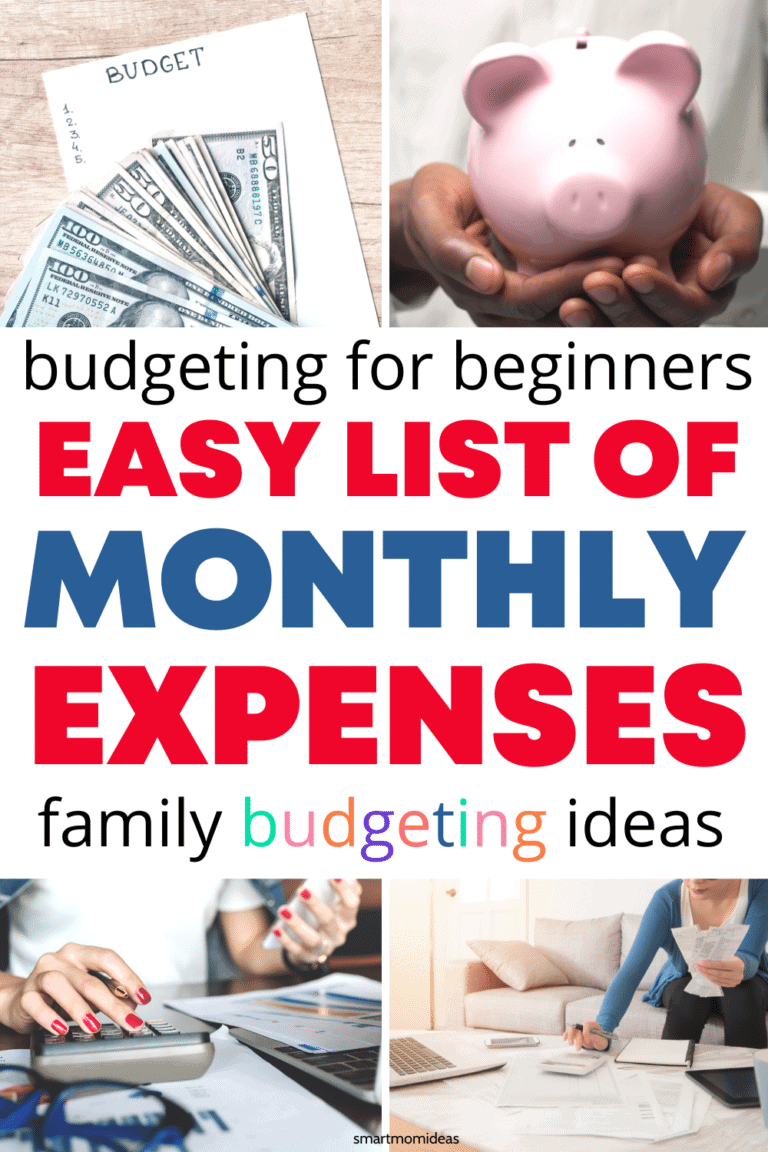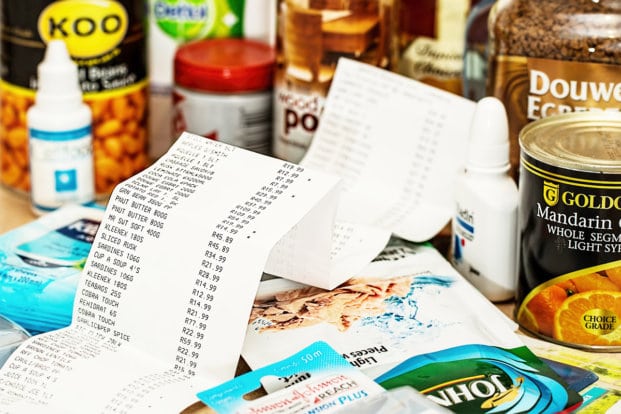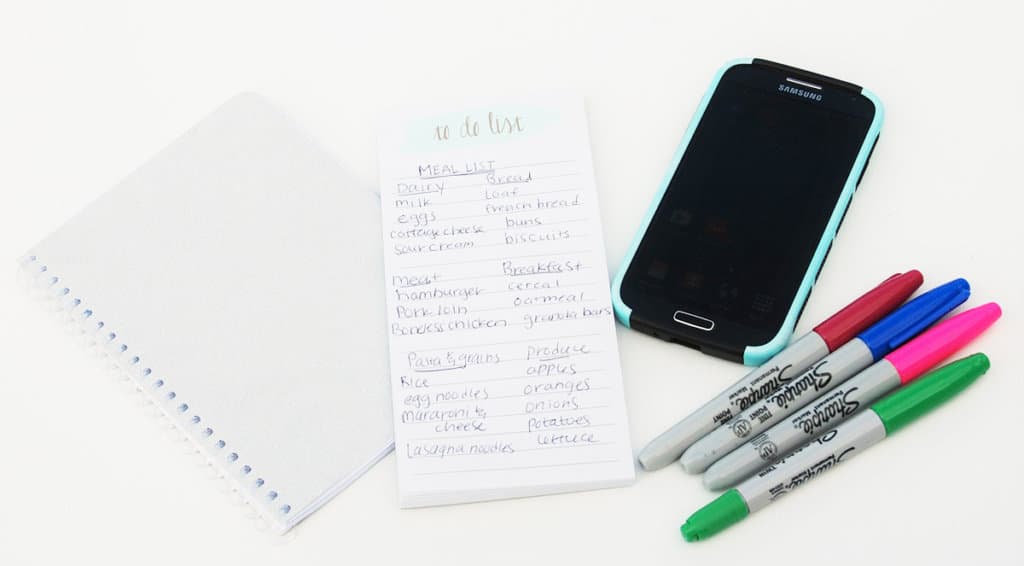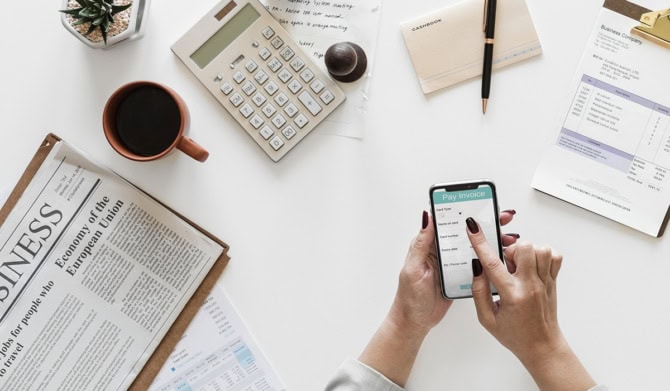Figure out your monthly expenses with this list and gain some budgeting tips along the way.
Do you struggle to keep track of all your monthly expenses?

Does it seem like there is always more month at the end of your money?
You know you should be keeping track of your monthly household expenses, but you don’t know where to start.
Monthly household expense lists are important because they help you stay on top of how much money is going out and coming in each month.
This way, if there is a discrepancy between what comes in and goes out, you can figure it out before it gets too big!
But the problem with creating an expense list is that there isn’t a clear-cut format for one.
We’ve put together this post that will help get you started on tracking your monthly household expenses.
We’ve also curated a list of free monthly budget template printables that includes spaces for income and spending categories as well as room for totals at the end of every month so that you can easily see how much money came into your house compared with how much went out!
But what should you include in this household expense list?
What Household Expenses Include?
According to Investopedia, “household expenses represent a per-person breakdown of general living expenses.” There are several different types or categories of household expenses.
These can include, but are not limited to:
- Home expenses
- Child-related expenses
- Transportation expenses
- Entertainment expenses
We will break these down into further categories in a minute.
What are the Average Monthly Household Expenses?
 This is going to vary a lot depending on many different factors.
This is going to vary a lot depending on many different factors.
Let’s take a quick look at some of the contributing factors that will help you calculate your average monthly household expenses:
- The amount of people living in your home.
- The number of dependents you have.
- The city you live in.
- Whether you pay rent or mortgage.
- If you have to pay property taxes.
- The vehicles you drive.
- The food you eat and how often you eat out.
- How high maintenance you are with personal care.
- The clothes you buy.
- What you do for entertainment.
- Your health and heathcare.
- What types of insurance you pay.
- If you have pets.
So as you can see, there are a lot of different factors that go into what the average monthly household expenses can be for a family.
However, according to DebtQuest, the average American household spends $5,102 monthly! That’s $61,224 per year. And that on SPENDING, not saving or investing either.
What are Common Living Expenses?
When looking at common living expenses, you are looking at things that you pay for in everyday life. These are also known as cost-of-living expenses, things you generally need to pay for in order to live.
The most common living expenses include things like housing, transportation, food, healthcare, child care, and other necessities. Again, these expenses will vary based on the family size, type of lifestyle, and where you live.
What are the Major Expenses of a Family?
 The most common major expense for a family is housing.
The most common major expense for a family is housing.
This includes paying a mortgage or rent, utilities to live in the house, and also required insurance for the house or apartment.
When it comes to the percentage of spending, the largest chunk of the pie generally goes to housing at around 30% of income. Let’s do a quick breakdown of the general, recommended amounts for specific categories:
- Housing: 25-30%
- Transportation: 12-20%
- Food: 10-20%
- Personal and entertainment: 10-15%
- Giving: 10%
- Savings: 5-10%
- Debt: 5-15%
- Utilities: 5% (this may or may not be part of the housing expenses)
- Insurance: 3-5%
- Healthcare: 3-5%
So as you can see, housing, transportation, and food make up the bulk of the average person’s monthly household expenses at 50-70%.
What is the Average American Income?
In 2020, the average American income was $87,864 with the median (the exact middle of all income) being at $61,937. So as you can see from the average household expenses, it can be easy to lose track of your expenses if you aren’t using a budgeting spreadsheet or some type of budgeting system.
How to Setup a Monthly Household Budget

Budgets can be really scary for a lot of people.
Many times, people are afraid to face the truth on how much they are actually spending on certain things (like those latenight Taco Bell runs).
So let’s go through how to set up a monthly household budget and I’ll also share some free resources for budgeting templates and budgeting spreadsheets.
Determine Where Your Money is Going
This is the most painful step, but it’s easier just to rip the bandaid off and get down to it.
Go back through your bank statements and figure out exactly what you are spending your money on.
You can also track for a month or so and just write everything down or record it in some way what you are spending and where. Be sure that you track all of your regular or recurring monthly/quarterly expenses, irregular expenses (things that get paid for only occasionally), subscriptions, and everything else you spend money on.
Decide on a System to Use
Once you have figured out where all of your money is going, then you have to figure out how to continue to keep track of it.
This can be done in a variety of ways.
Through good old pen and paper spreadsheets, fancy budgeting apps, and free budgeting templates.
It might take some time to really determine what the best strategy for you and your family is. I love apps that do most of the tracking for you, but I adore a simple budgeting template that I can print out and post in my kitchen for the kids and hubby to see too.
Free Budgeting Templates
If you prefer the simplicity of pen and paper or want to nerd out over data, then these free budget templates and budget spreadsheets are sure to get you excited.
Easily track your regular and essential expenses and long term and emergency savings with this simple little budget template from Clever Girl Finance.
Prefer to work in spreadsheets? Then check out this simple monthly budget spreadsheet from Google sheets.
Microsoft Excel also offers an easy to use monthly family budget spreadsheet.
NerdWallet offers a free monthly budgeting worksheet where you plug in all of your information and it will send you a snazzy little budgeting spreadsheet. The Savvy Couple’s free budget template.
It’s lovely to look at and easy to use. Some people have a really hard time budgeting because they just can’t stand to look at those boring spreadsheets. Not with this lovely little, bright budgeting worksheet from A Mom’s Take.
If you prefer to look ahead for the whole year, then check out this yearly budget calculator.
A great way to plan for upcoming and irregular expenses.
If you are just starting out budgeting and you want to get a little more granular with your spending, then check out this weekly spending sheet.
This monthly budgeting worksheet from Mama and Money is a great worksheet for beginners. It easily breaks down the various expense categories while focusing on the planned and actual money spent.
My Final Two Cents
Budgeting doesn’t have to be hard. While it might take some time to get everything in order and used to using a budget, you will be glad you did!
No one ever became financially literate and mastered their money without some type of budget and planning.
So start today!




Leave a Reply